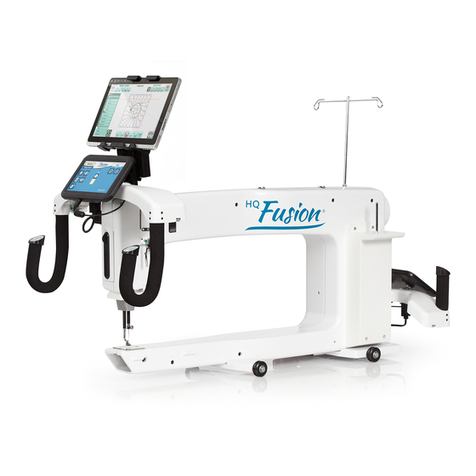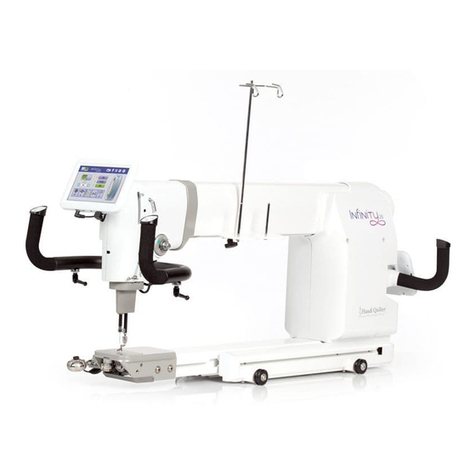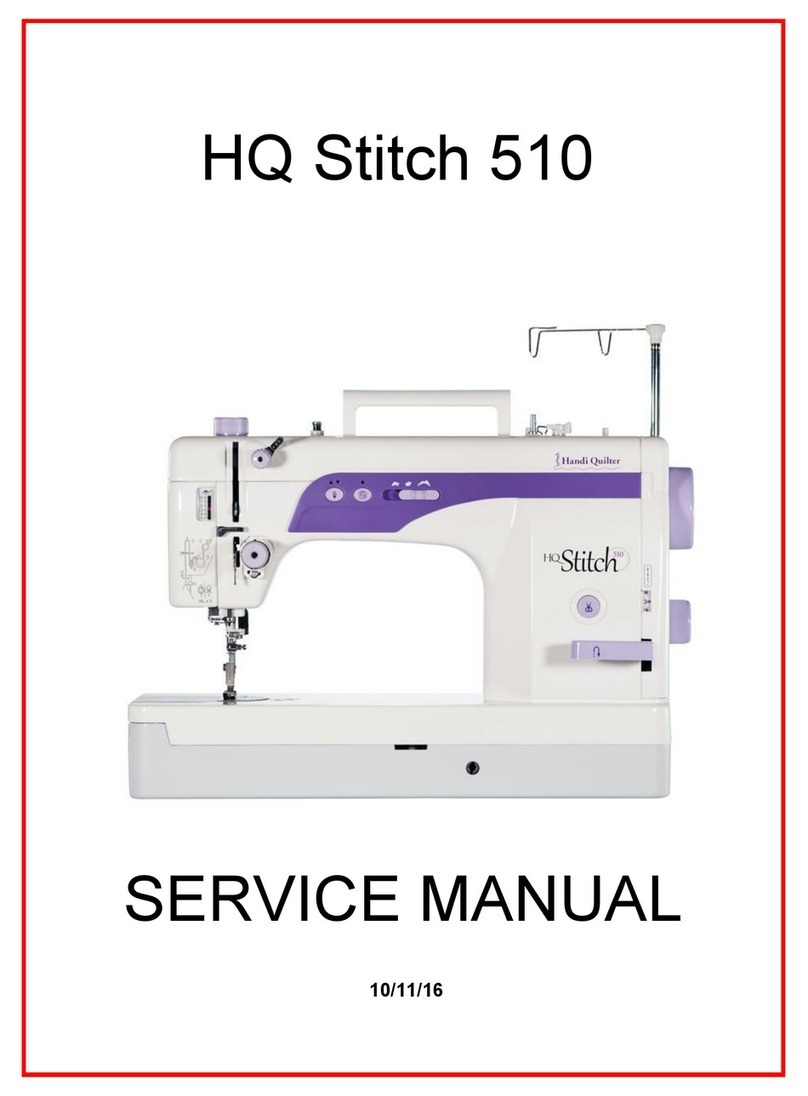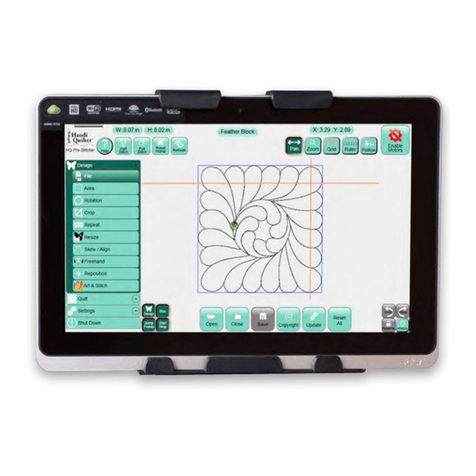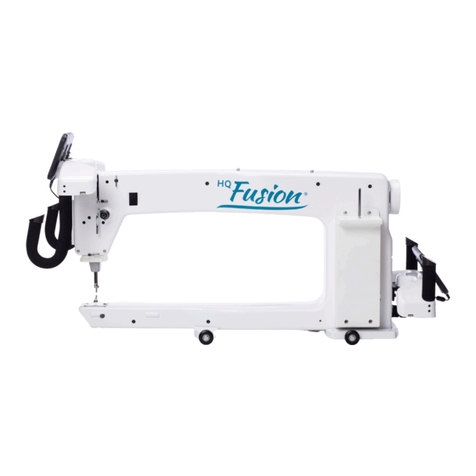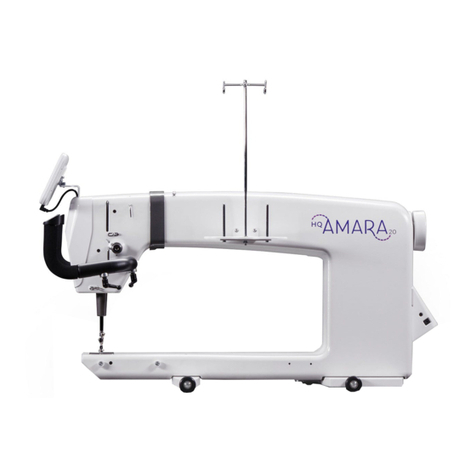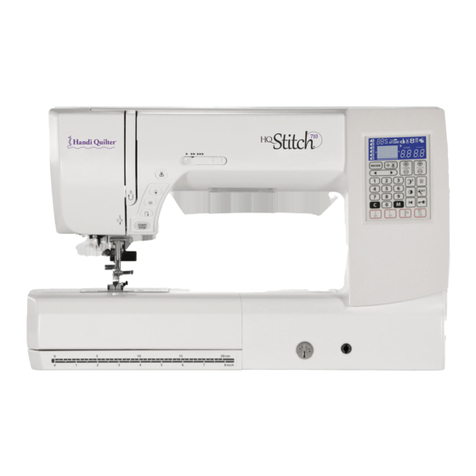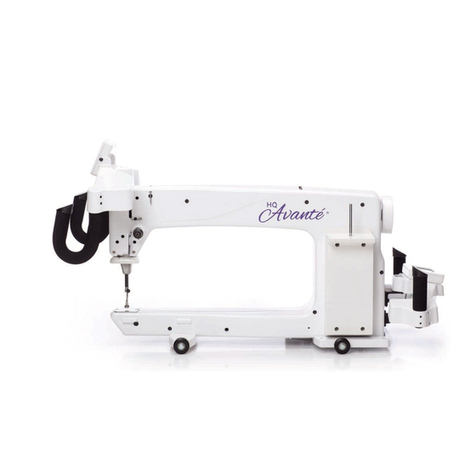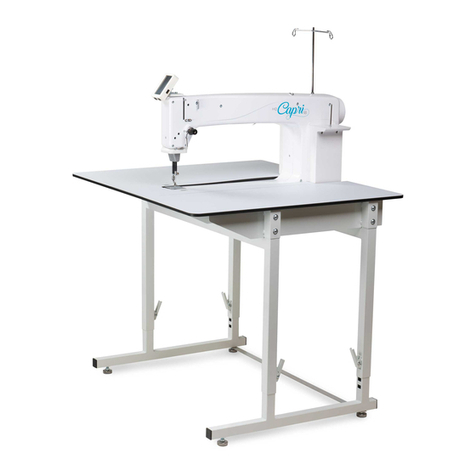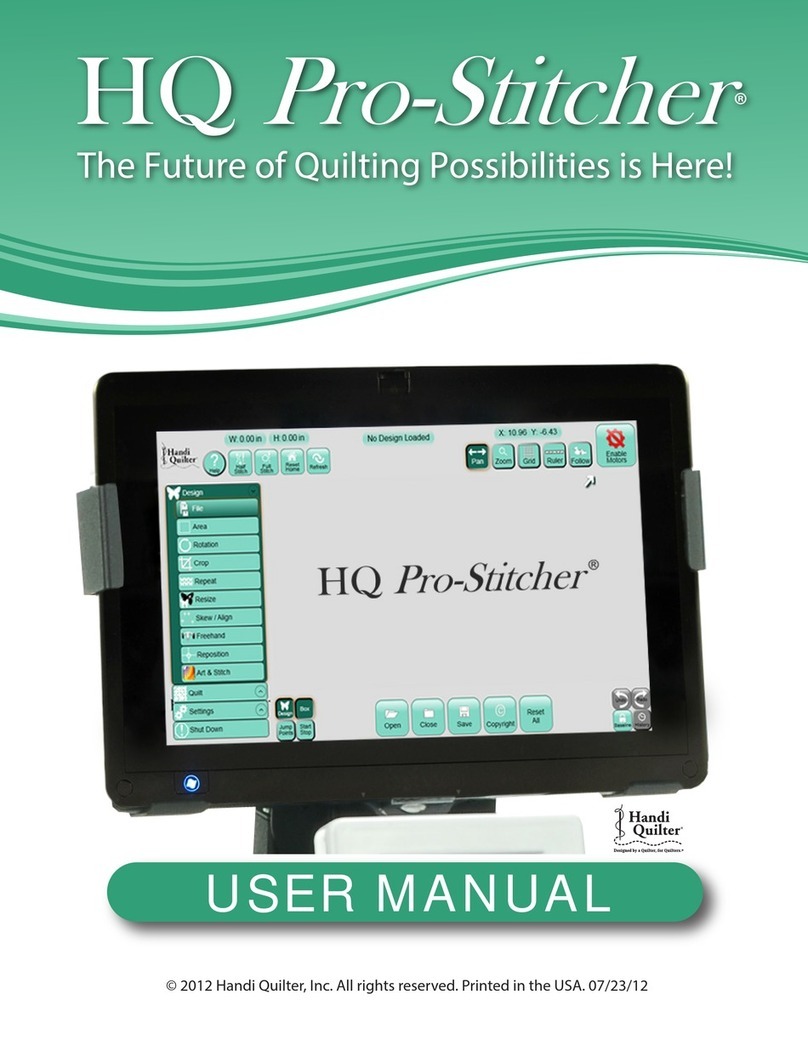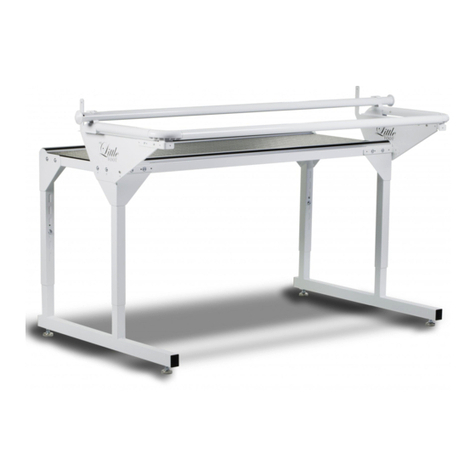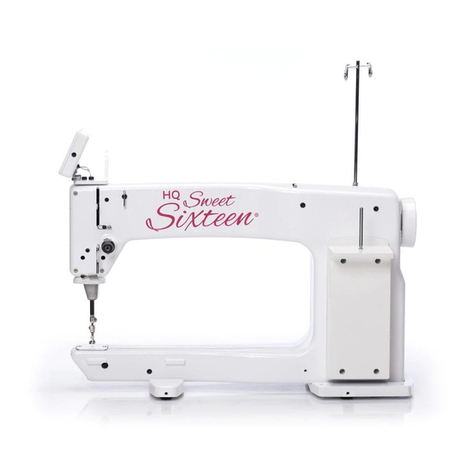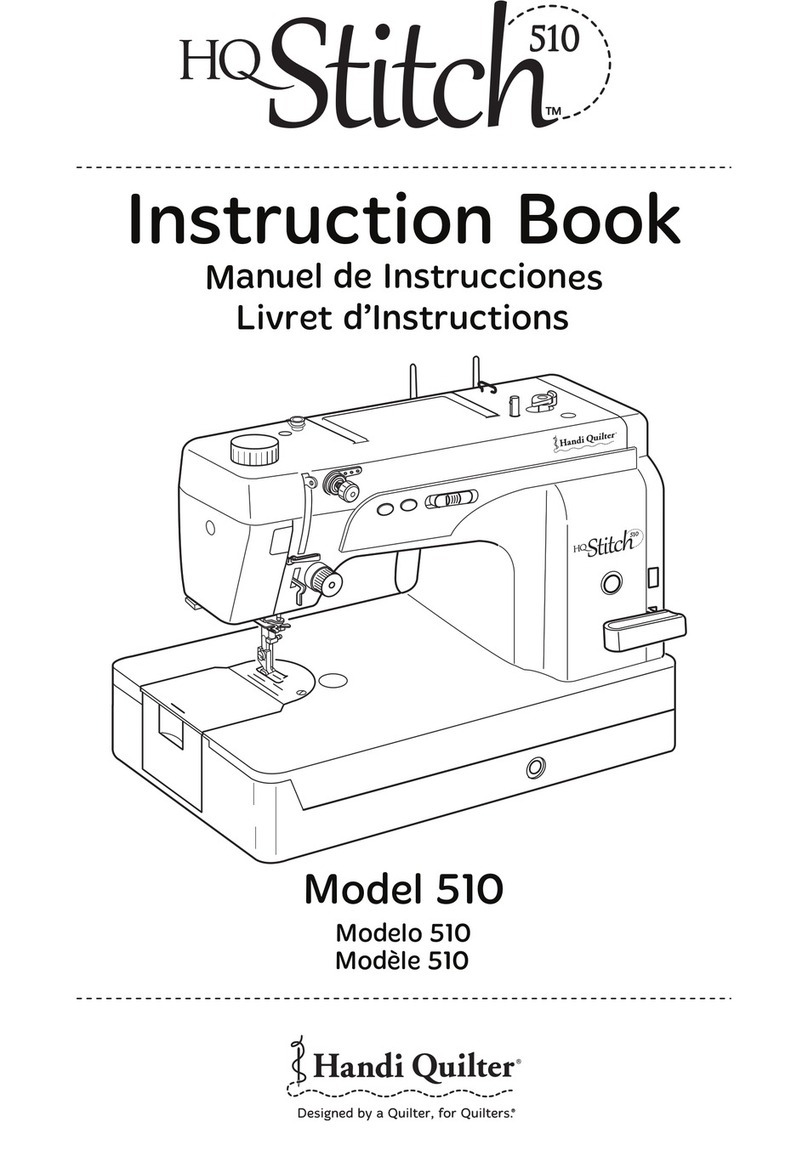
Read all instructions before using.
When using this machine, basic safety precautions should always be taken, including the following:
Read all instructions before using.
DANGER - To reduce the risk of electric shock:
• A quilting machine should never be left unattended when plugged in. Always unplug the machine from the
electrical outlet immediately after using and before cleaning.
WARNING - To reduce the risk of burns, fire, electric shock, or injury to persons:
• Do not allow to be used as a toy. Close attention is necessary when this quilting machine is used by or near
children.
• Use this quilting machine only for its intended use as described in this manual. Use only attachments rec-
ommended by the manufacturer as contained in this manual.
• Never operate this quilting machine if it has a damaged cord or plug, if it is not working properly, if it has
been dropped or damaged, or dropped into water. Return the quilting machine to the nearest authorized
dealer or service center for examination, repair, electrical or mechanical adjustment.
• Never operate the machine with any air openings blocked. Keep ventilation openings of the machine free
from the accumulation of lint, dust, and loose cloth.
• Never drop or insert any object into any opening.
• Do not use outdoors.
• Do not operate where aerosol (spray) products are being used or where oxygen is being administered.
• To disconnect, turn the machine switch to the symbol “O” position which represents off, then remove plug
from outlet.
• Do not unplug by pulling on cord. To unplug, grasp the plug, not the cord.
• Keep fingers away from all moving parts. Special care is required around the machine needle.
• Always use the proper needle plate. The wrong plate can cause the needle to break.
• Do not use bent needles.
• Switch the machine to the symbol “O” position to turn it off when making any adjustments in the needle
area, such as threading needle, changing needle, threading bobbin, or changing presser foot, and the like.
• Always unplug the machine from the electrical outlet when removing covers, lubricating, or when making
any other user servicing adjustments mentioned in the instruction manual.
• This sewing machine is not intended for use by young children or infirm persons without supervision. (For
Australia and New Zealand only)
• Young children should be supervised to ensure that they do not play with this machine.
SAVE THESE INSTRUCTIONS
This machine is intended for household use.
Disclaimer
Handi Quilter and its Representatives are in no way legally responsible or liable for damage to the
HQ Sweet Sixteen when used improperly or not in accordance with the guidelines stated in this
manual or when used on machine quilting frames not recommended by Handi Quilter.
IMPORTANT SAFETY INSTRUCTIONS
